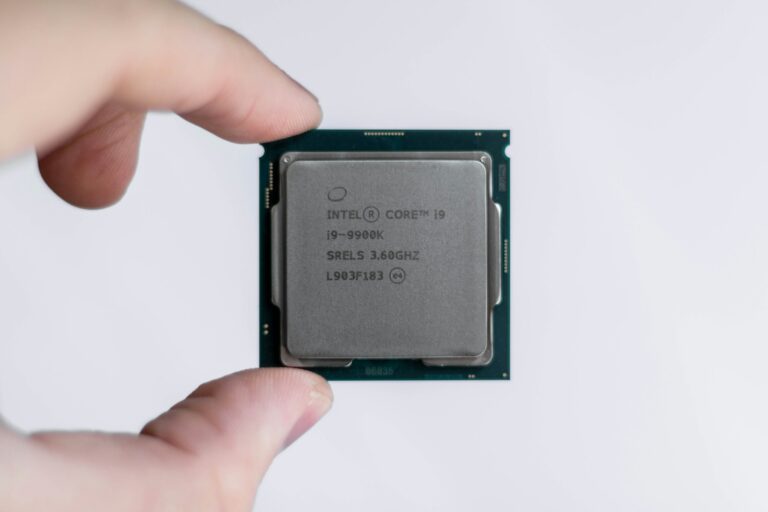Checking your CPU’s speed and model in Linux is quick and easy. Whether you need this info for troubleshooting, performance checks, or system upgrades, Linux provides simple commands to get the details. This guide covers multiple ways to find your processor’s model name, clock speed, and other key specs using built-in tools.
Table of Contents
Why Check Your CPU Speed and Model?
Before diving into the commands, let’s explore why you might want to know your CPU speed and model:
- Performance Assessment: To gauge your system’s capabilities.
- Troubleshooting: To identify hardware bottlenecks.
- System Upgrade: To ensure compatibility with newer hardware or software.
- Monitoring: For optimizing system loads and processes.
Methods to Check CPU Information in Linux
1. Using the lscpu Command
The lscpu command is one of the simplest and most direct ways to fetch detailed information about your CPU.
lscpuOutput Example:
- Architecture: x86_64
- CPU(s): 4
- Model name: Intel(R) Core(TM) i5-8250U CPU @ 1.60GHz
- CPU MHz: 1600.000
Benefits:
- Easy to use.
- Displays a comprehensive summary of your CPU architecture and speed.
2. Checking /proc/cpuinfo
The /proc/cpuinfo file contains detailed information about all processors on your system.
cat /proc/cpuinfoKey Fields to Note:
model name: CPU model.cpu MHz: Current operating frequency.
Example:
processor : 0
model name : Intel(R) Core(TM) i5-8250U CPU @ 1.60GHz
cpu MHz : 1800.0003. Using the dmidecode Command
dmidecode extracts hardware information from the system’s BIOS.
sudo dmidecode -t processorOutput Highlights:
- Manufacturer: Intel
- Version: Intel(R) Core(TM) i5-8250U CPU @ 1.60GHz
- Current Speed: 1.80 GHz
Note: Root privileges are required to run this command.
4. Using inxi
inxi is a powerful system information tool available on most Linux distributions.
inxi -COutput Example:
CPU: Dual Core Intel Core i5-8250U (-MT MCP-) speed: 1800 MHz5. Using the hwinfo Command
hwinfo provides detailed hardware information, including CPU details.
sudo hwinfo --cpuHighlights:
- Displays model name, speed, and more.
Note: Root access is required to use hwinfo.
6. Using Graphical Tools
If you prefer a GUI-based approach, you can use tools like:
- System Monitor: Available in most desktop environments.
- Hardinfo: Provides a graphical view of hardware details.
Command to Install Hardinfo:
sudo apt install hardinfoUnderstanding CPU Speed Variations
What is CPU MHz?
CPU MHz indicates the operating frequency of your processor at any given time. It can vary due to:
- Dynamic Frequency Scaling: CPUs adjust their speed based on load.
- Power-Saving Modes: Lower frequencies to conserve energy.
- Overclocking: Increasing speed beyond manufacturer specifications.
Multi-Core Processors
Modern CPUs often have multiple cores, and each core’s speed might vary depending on the workload.
Troubleshooting Common Issues
If you encounter inaccurate or incomplete CPU information:
- Ensure Root Access: Some commands require superuser privileges.
- Update Packages: Ensure tools like
dmidecodeandlscpuare up to date. - Check Kernel Version: Older kernels may not support newer hardware.
Frequently Asked Questions
Can I find CPU details without root access?
Yes, commands like lscpu and reading /proc/cpuinfo do not require root privileges.
Why does my CPU speed fluctuate?
Modern CPUs dynamically adjust their speed based on workload and thermal conditions.
How can I monitor CPU performance in real-time?
Use tools like htop or top to monitor real-time performance metrics.
Is it safe to overclock my CPU?
Overclocking can boost performance but may cause overheating and instability. Proceed with caution.
How do I check CPU temperature in Linux?
Use tools like lm-sensors to monitor CPU temperature:
Conclusion
Finding your CPU speed and model under Linux is straightforward using various tools and commands like lscpu, /proc/cpuinfo, and dmidecode. Each method provides unique insights into your processor’s performance and capabilities. Whether you are a developer, system administrator, or enthusiast, knowing your hardware is the first step toward maximizing your system’s potential.

